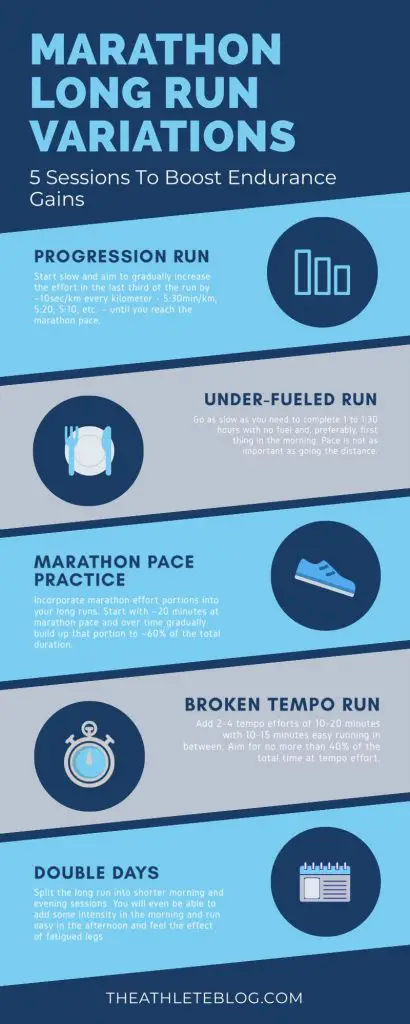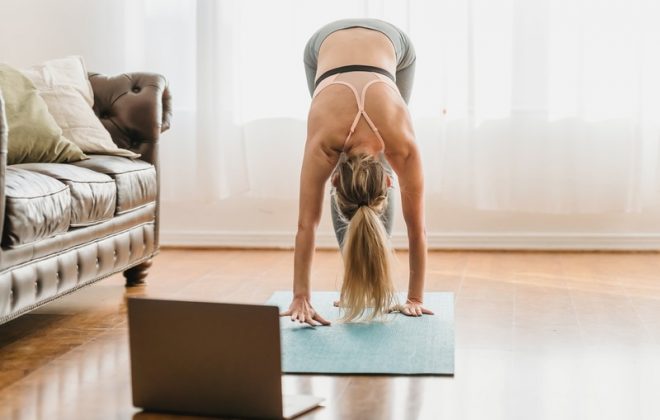How To Run Without Getting Tired (+6 Sessions To Try)
Long distance running is not a piece of cake. And definitely not for everyone – it can break people both physically and mentally. In fact, finishing a marathon requires the body to go through hell and come back. Some of us do it once as a bucket list goal, while others are determined (or daredevil) enough to carry on chasing Personal Bests and finishline endorphins. Whether you’re a beginner or a seasoned distance runner, I’ll share with you some of the key training tips on how to run without getting tired.
I originally wrote this post as my personal running experience while I trained for my first marathon. In particular, I did it ~8 weeks before to look back at my training to see if I’ve missed something. Since then, I’ve revisited these tips and updated the post numerous times with my experience – as an athlete and a coach.
In the first half of preparation for my first marathon, despite training consistency, I haven’t done many runs longer than 2 hours. In part because throughout the training my weekly volume was not that high – only around 40K/week. That’s even less than what I did for a half marathon the year before.
I did focus on improving speed and the quality of my sessions, though, which in retrospect did help a lot.
How to run without getting tired?
So, what did I learn from my marathon training? While there are many pillars that make a good endurance athlete, the simple answer to the question above is: incorporate regular long runs into your training.
Regular runs of over 90 minutes gradually prepare the body for particular demands of a marathon race. Some of the key benefits of this kind of training are:
- Improved endurance and running economy
- Stronger muscles and connective tissues
- More efficient fat-burning process
- Mental toughness
There are multiple studies that confirm that long slow distance training (Zone 2 and below) results in decreasing percent body fat and maximum heart rate and by increasing fat free mass and VO2peak. The best part is that in order to eventually run longer without getting tired (and faster), you don’t necessarily need do it in one go. Run-walk is a perfectly good strategy as well.

Myths about long runs
Long slow distance (LSD) training is a very versatile workout type, but sometimes athletes get it wrong. So, what are some of the misconceptions and what is considered a long run?
MYTH: I need to run the entire distance, otherwise the session doesn’t count as a long run.
FACT: In reality, for the purpose of training it is not about how to run without stopping. Instead, the benefits from endurance training come from maximizing the time an athlete spends in the so-called aerobic zone. Even if it requires some athletes to use a run-walk strategy. At such low intensity level the athlete should feel very comfortable. The more important part is to increase the overall volume over weeks of training. Hard to do that when every run is challenging.
MYTH: I need to complete a 20-miler (32k) during marathon training to be able to finish the race.
FACT: Running that long does help to simulate demands of a marathon and specialize better for the distance. But it’s not a ‘marathon requirement’. In fact, in my 3:03 marathon training prep my longest session was 16k. Running very long will only work if the athlete is able to process that training load and recovery fully before the next key workout.
MYTH: Marathon long run is only about time on your feet. Athletes just need to get through it and not worry about pace or effort level.
FACT: Again, we need to think about the specificity of the marathon race. Most of the athletes will run the distance somewhere between 2:30 and 5:30 hours. That’s a wide range of intensities (Zone 3 to Zone 4) and running easy all the time will not fully prepare the person for such intensity (even if it’s a 20-miler).
In the video below I explain how to build endurance and also give some long run tips to apply to your training.
Athletes who want to learn how to run without getting tired have many questions on their mind. What the long run pace should be? How to prepare for a long run? Should it be long and slow all the time or should I include some ‘marathon pace’?
Duration – how long should my long run be?
At least over 90 minutes. However, due to high impact of running it’s not very healthy to run for over 2.5 hours. Consistently staying on your feet for extended amount of time is one of the best ways to train your body how to run longer without getting tired. However, this does build a lot of fatigue. So, if taken too far, it can throw off half of the next week’s training.
I can already hear some people thinking 2 hours? How to run a mile without getting tired? Keep in mind, you don’t need to cover all 2+ hours by means of running. Take some breaks or switch to a run-walk strategy if you’re struggling to complete the session. The important part is to keep the intensity low and duration long.
Contrary to the advice that is out there, it’s not a requirement to complete a 20-miler (33K) in the build up for a marathon. It does sound like a rite of passage, though.
For the average runner the time needed to cover that distance will not outweigh the benefits. With a pace of 6:00min/km one will need almost 3.5 hours for this session. It’s better to go for a hike or do a double day instead.
Generally, long runs of 1:40 to 2:20 hours are perfect for most athletes. But do make sure it’s under 20-30% of your weekly total mileage.
It’s enough time to stimulate adaptations and not too long to build too much fatigue. Also, it’s best to mix up the duration of the run from week to week to manage intensity and recovery. For instance, a 2:20 hour easier run one weekend and a 1:40 hour more intense run the next.
Running this long requires gradual adaptation, though (around 10%-15% increase per week). Too much volume too soon can lead to overused muscles, accumulated fatigue and can, actually, reverse the gains.
Related: How To Build Running Endurance – 7 Science-Proven Methods
Effort – what pace should long runs be at?
Not hard at all. Generally, it will be somewhere between 76% and 83% of the functional threshold (40-45min all out effort). However, using heart rate is a better option for low intensity training, as pace might vary due to various factors (fatigue, weather, etc.). In that case, aim for lower to middle Zone 2
Slowing down, in fact, is a good strategy how to run without stopping. There is this saying, if you think you’re running easy, you’re running too hard, which is totally true. The intensity of a ‘classic’ long run should be no higher than Zones 1 and 2. Many athletes tend to over-estimate that.
In the end it’s a two-way street. What low intensity and long duration do is provide the best combination to grow mitochondria in the muscles and train the effective fat utilization.
Ability to utilize fat is critical for marathon runners. Limited amount of glycogen (carbs stored in our muscles) puts a hard limit on how long we can run at moderate/fast pace. Once this reserve starts to run out, the athlete comes to a very frustrating stop and ‘hits the wall’.
With training, though, athlete becomes less reliant on carbs and the speed he is able to maintain at low intensity will also increase.
Related: 5 Heart Rate Training Zones – Guide To Maximum Endurance Gains
Nutrition – how to prepare for long run?
The most important thing about nutrition is to get enough water to avoid dehydration. If it’s a particularly hot day it’s a good idea to add electrolyte tablets as well to get enough sodium. I prefer to take it in a throwaway bottle and have some cash to buy more if needed.
Apart from that it’s really about testing out what works for the body and what’s not. After all, every athlete is different and what works for one runner may not work for another.
Marathon long run is the best time to test out different fueling strategies and find what works for you.
Generally, though, if the training lasts for longer than 1.5 hours and involves intensity (like high Zone 2 and above) it’s better to take additional fuel with you.
Liquid calories, like gels, work best, because those are easier to consume and digest.
6 long run workouts to learn how to run longer without getting tired
After an athlete can comfortably complete a 1.5 to 2 hour run at an easy pace it’s time to add some variety to long runs to better prepare for race day.
In particular, adding efforts at marathon pace and slightly above it (upper Zone 3 for most athletes) will train the body to maintain the pace better on race day.

#1 Progression run
The idea behind this long run workout is to finish the session faster than you’ve started it. Adding intensity at the end of the long run simulates the last quarter of the marathon when the body is tired, but there are still 10K to go. So, this session teaches the body to run at (or above) marathon pace on tired legs.
How? Aim to gradually increase the effort in the last third of the run by ~10sec/km every kilometer – so, 5:30min/km, 5:20, 5:10, etc. – until the marathon pace.
With time you can start progression in the middle of the run and spend more time at marathon pace at the end.
#2 Under-fueled long run
Training in carb-depleted state improves the body’s ability to metabolize fats for fuel. Intensity of this kind of training should be very low (low Zone 2), so don’t pair it with any one of the other long run variations.
How? This should be one of the shortest long runs (1:30 hours, maybe) and it’s better to do it first thing in the morning. Go veeery easy and take water with you.
#3 Marathon pace practice
This is one of the best long run workouts in marathon training. It helps to practice pacing and feel what the body is capable of, while building durability. The goal is to include a portion at marathon pace (target heart rate Zone 3 for majority of runners) in the middle of the long run.
How? Start with ~20 minutes at marathon pace and over time gradually build up the marathon pace portion to around 60% of the total duration. So, a 2 hour long run may look as following – 30 minutes easy, 1:10 hours at marathon pace, 20 minutes easy.
#4 Broken tempo long run
Tempo effort is slightly faster (10-15sec per km or high Zone 3) than a marathon pace. Adding it to a long run trains the body to tolerate that effort better. As a result, marathon effort on race day will seem easier.
These broken tempo intervals are not too long (typically 10-20 minutes) and are followed by a long rest period (10-15 minutes). This way you get plenty of recovery, but still accumulate a good training load.
How? Perform 2-4 tempo efforts of 10-20 minutes with 10-15 minutes easy running in between. Aim for no more than 40% of the total run at tempo effort to avoid building too much fatigue. A ~2 hour session can look as following: 20 minutes easy, then 3×15 minutes tempo effort with 15 minutes easy in between and finish off with 20 minutes easy.
#5 Fartlek long run
Fartlek (or Speed Play) is an effective way to spice up your marathon long run workouts. Use effort/pace variations every now and then throughout your long session to mix it up. The goal is to trigger some fatigue and then let the body process it. This helps your legs to get used to running at a quicker pace for longer duration. The best part about this is that this session can be both – structured and unstructured. So, don’t stress too much about it.
How? Play around with intensity during your long runs. For example, run easy for 10 minutes and then 1 minute at Zone 4 intensity and repeat the cycle throughout the session. Or throw in a an occasional 1k (or a mile) at marathon pace and come back to Zone 2 to recover for 5-10 minutes.
#6 Double days
Doing double days instead of one long session is a good starting point for beginners who don’t have enough running background. This type of long run training is frequently used by Ironman athletes who already accumulate a lot of stress from extensive bike training and want to minimize the risk of injury.
How? Exactly as it sounds – 2 training sessions per day. Split the long run into medium morning and evening sessions. This way you will even be able to add some intensity in the morning and run easy in the afternoon feeling the effect of fatigued legs.

The Resilient Athlete
A Self-Coaching Guide to Next Level Performance in Sports & Life
Are you aiming to become a resilient athlete who is able to withstand any pressure? Be able to jump on any opportunity? Take any challenge life throws at you head on?
Then this book is for you.
Learn moreDid you find this information useful? Share the post with others using the buttons below.
Excerpt from my personal training log
Update: my first marathon was a roller coaster of emotions. Read my race report here, if you’re interested.
I am getting closer to the race day and am adding more intensity to my long runs.
This week I skipped cycling and focused on running and kayaking for a change. My weekly volume is around 60K now which I plan to sustain for the remaining 2 months.
I also plan to change the schedule of my long run workouts a bit and make it more structured. I’ll rotate a 2:20 hour easy session one week with a 1:40 hour long run workout the next week. This should give enough volume to maintain endurance I’ve build and minimize fatigue from intensity I’m adding.
Currently my long run distance is around 20-25K, but I want to understand better how to pace the race. Also, I’m really curious how my body will respond to even more running.
On a bitter note, I still haven’t nailed the stretching routine. After my failed yoga party a month ago I’m trying to stretch muscles after every session, yet I’m still feeling tightness. I hope it will go away after the taper and just in time for the race.

Tags In
Andrejs
Related Posts
Leave a Reply Cancel reply
GET A FREE TRAINING PLAN
Subscribe to my email list and get access to a free 4-week “back in shape” training plan
You’ll also get two full-body strength sessions and some other goodies!

How did I get here?
Hey there! My name is Andrejs and I am here to inspire, entertain and get you fit for any adventure.
I went from being an over trained pro athlete to an endurance coach sharing how to listen to your body and live life to the fullest.
Traveling, new sports & activities brought new meaning to my training and made it much more effective, fun and enjoyable. And I'm here to help you do the same.


